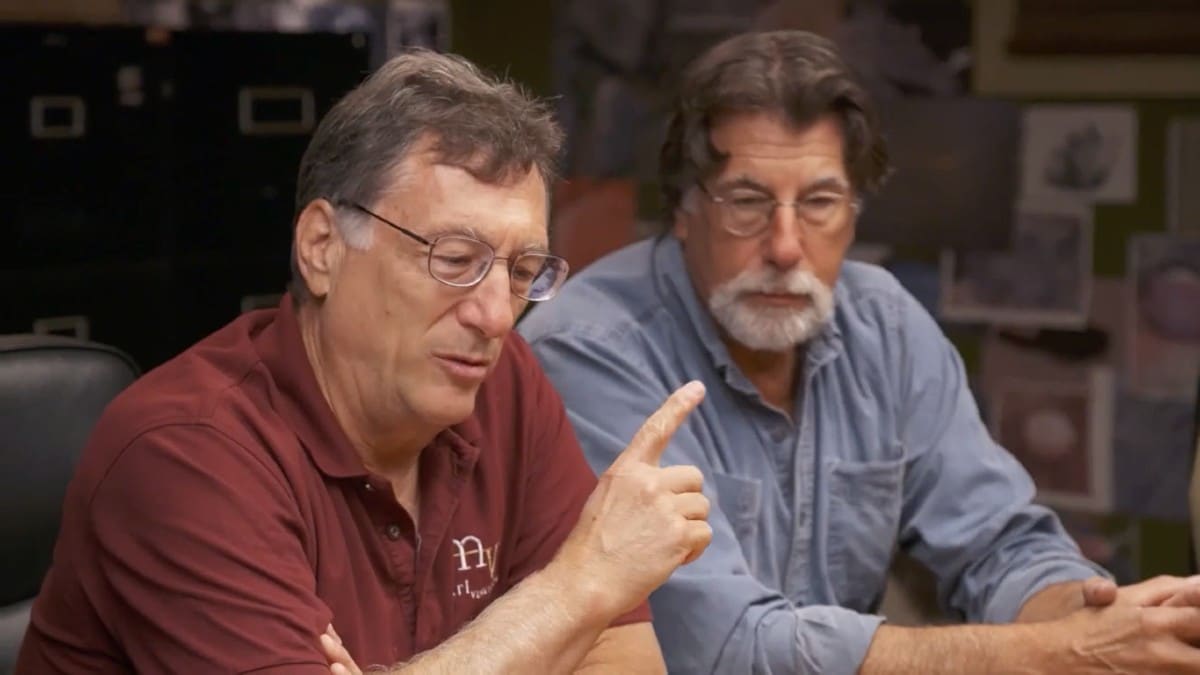
On this week’s episode of The Curse of Oak Island, the team discovered more gold buried in the Money Pit area.
Ever since the team learned of the presence of not just silver, but gold, in water samples found under the surface in the Money Pit area, they have understandably focused their efforts on trying to dig it up.
And this week, the drill uncovered a piece of metal that actually contained gold. This means that the evidence for gold at the Money Pit area is now increasing on a week-by-week basis.
The guys are concentrating their drilling efforts around the infamous C-1 shaft in what they’ve dubbed the C-1 cluster. They named the first hole D-2, and it has already yielded a couple of fantastic finds.
At between 88 and 92 feet, the team pulled out their most exciting core sample. The first thing they noticed was wood, a lot of wood, enough wood to suggest they’ve hit some kind of a tunnel or structure. But the most interesting aspect of this core sample was the chunk of metal that they pulled out of it.
Charles Barkhouse and Terry Matheson wondered if it might be a piece of concrete from the illusive Chappell Vault. According to Charles, in 1897, the Oak Island Treasure Company reported drilling through cement which was believed to be attached to a vault.
Clear evidence of gold at the Money Pit area
At the Archaeology Trailer, Dr. Ian Spooner put the mysterious object into the X-Ray Fluorescence (XRF) machine to determine exactly what it was made up of. As the machine calculated, Rick Lagina commented on the interesting materials popping up on the screen. However, it was Gary Drayton who first spotted the Au symbol, which indicated the presence of gold.
Spooner and XRF machine provided us with a list of all the elements present, but the only one the guys were really interested in was the Au element. The chart read that the piece contained 0.068 percent gold, which doesn’t sound like a whole lot, but Spooner assured everybody that it was “more gold than you think.” Although, he admitted that it wasn’t a Gerhardt dump-truck amount of gold but was more like a thimble full.

The geoscientist further clarified that the gold could either be a part of the metal piece or it may have come from sediment. Either way, he admitted that he was constantly surprised and delighted at the results we keep seeing from the Money Pit area. He joked that he keeps being “surprised at a furious rate.”
It may have been a relatively small amount of gold, but it is yet another indicator that the precious metal is present in the Money Pit area. The team was also pleased that it was found at about 90 feet because this is the exact depth where they’d be expecting to find the treasure.
The wood artifacts were dated to 15/16th century
It seems as though gone are the days when viewers had to wait multiple episodes to get back the results of tests because later in the episode, Craig Tester was able to reveal the results of carbon-14 dating done on the wood found in the same core sample as the metal piece.
Craig started by reminding everybody about an artifact found last year buried in the Money Pit area that was subsequently dated to between 1488 to 1650; this had been discovered just two feet away from this week’s find. With that in mind, Craig calmly revealed that the new wood was also dated from 1488 to 1650.
This news led to astonished gasps all around; Gary shouted, “it’s medieval, baby!” This places the objects on the island at least 150 years before the initial discovery of the Money Pit in 1795.
The Curse of Oak Island airs at 9/8c on History.